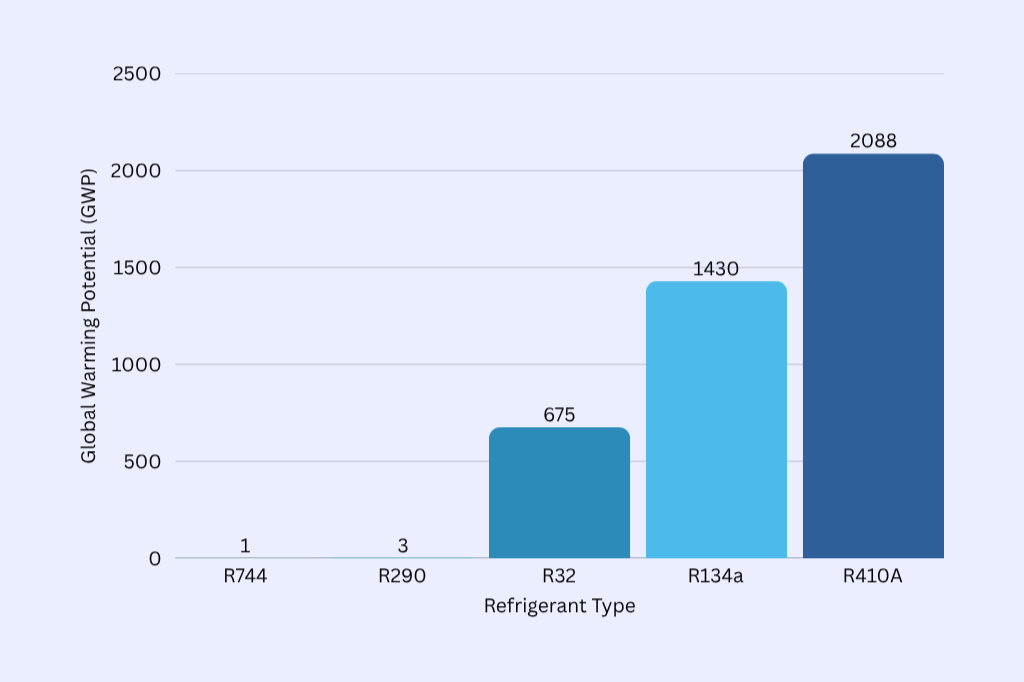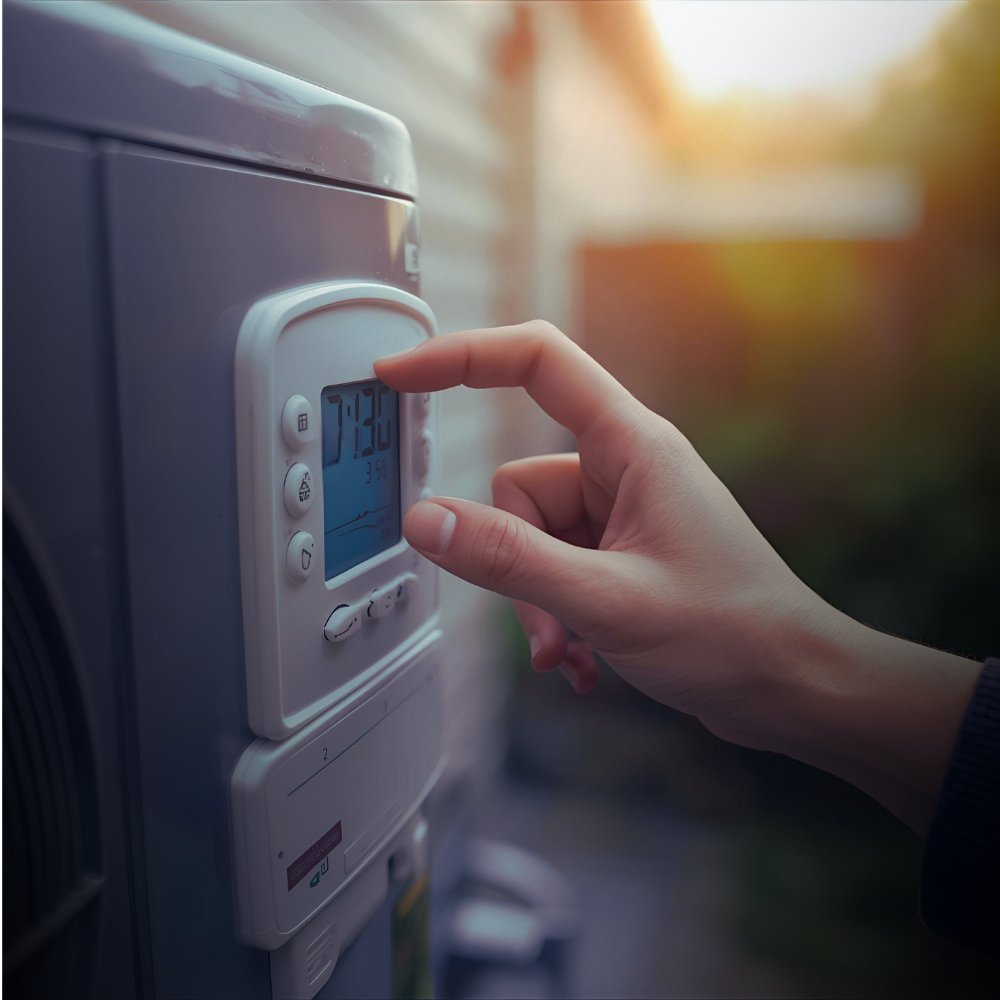Why refrigerant choice matters in Heat Pump Hot Water systems
Key Takeouts
Refrigerants are the working fluid inside your heat pump that move heat from the air into your hot water.
Different refrigerants have different climate impacts, measured by Global Warming Potential (GWP).
Older refrigerants like R410A and R134a have very high GWP, making them harmful if leaked.
Modern refrigerants like R290 (propane) and R744 (CO₂) are far more climate-friendly.
Choosing a system with a low-GWP refrigerant means lower emissions, better efficiency, and future-proof technology.
What is a refrigerant anyway?
A refrigerant is a special fluid that moves heat around. In your fridge, it takes heat from inside and dumps it outside, keeping your food cold. In a heat pump hot water system, the refrigerant does the opposite—it absorbs heat from the air outside and delivers it into your water tank .
Think of the refrigerant as the delivery driver: it picks up heat from the air, drives it over, and drops it off in your hot water tank. The better the “driver” (or refrigerant), the more climate-friendly the delivery.
Does refrigerant choice matter?
Not all refrigerants are created equal. While they all move heat efficiently, they differ in how much they contribute to climate change if they escape into the air. This is measured by Global Warming Potential (GWP).
A refrigerant with a high GWP traps thousands of times more heat in the atmosphere than carbon dioxide.
A refrigerant with a low GWP traps far less heat and is considered climate-friendly.
So while your heat pump saves electricity, the refrigerant inside can make a big difference to your home’s total climate impact.
Everyday analogy: Shopping bags
Think of refrigerants like shopping bags:
Old-fashioned single-use plastic bags (high-GWP refrigerants) do the job, but they’re harmful to the environment.
Modern reusable cloth bags (low-GWP refrigerants) do the same job, but with much less impact.
Both carry your groceries—but one clearly leaves the planet better off.
Common refrigerants in Heat Pumps
R134a and R410A – Older, widely used refrigerants. They work well but have very high GWP (1,430 for R134a and 2,088 for R410A). A single kilogram leaked is like releasing over a tonne of CO₂ .
R32 – A newer refrigerant, with a GWP of 675. Better than the old ones, but still much higher than ideal.
R290 (Propane) – A natural refrigerant with a GWP of just 3 . That’s nearly 700 times lower than R32, and over 2,000 times lower than R410A.
R744 (CO₂) – Another natural refrigerant, with a GWP of 1 (the same as CO₂). It can achieve very high water temperatures and is also considered climate-friendly.
Choosing a heat pump with R290 or R744 refrigerants = lower bills, lower emissions, and future-proof tech.
Why low-GWP refrigerants are the future
Global regulations are phasing out high-GWP refrigerants. That’s why more manufacturers are moving to R290 and R744. Choosing a heat pump with one of these refrigerants means your system is future-proof and designed with the planet in mind.
What this means for Homeowners
When you’re getting quotes for a new hot water heat pump, don’t just ask about price and tank size—ask about the refrigerant.
Lower environmental impact – R290 or R744 systems drastically cut greenhouse impact if the refrigerant leaks.
Better efficiency – Natural refrigerants often perform better in Australia’s climate.
Future-ready – High-GWP refrigerants are being phased out, so low-GWP choices keep your system up to date.
Everyday analogy: Car emissions
Think of refrigerants like cars on the road.
An old petrol car (high-GWP refrigerant) still gets you from A to B, but it pollutes a lot.
A modern hybrid or EV (low-GWP refrigerant) does the same job with much lower emissions.
If you had the choice, wouldn’t you go with the cleaner option?
The bottom line
Refrigerants may be hidden inside the system, but their impact isn’t invisible. Choosing a heat pump with a low-GWP refrigerant like R290 or R744 is one of the simplest ways you can reduce your home’s environmental footprint while still enjoying lower energy bills.
So next time you’re comparing heat pump hot water systems, remember to ask:
👉 What refrigerant does this system use?
It’s a small detail that makes a big difference—for your home, your wallet, and the climate.
ReferencesElectrify Boroondara Knowledge Base – Understanding Heat Pumps (2024)Electrify Boroondara Knowledge Base – How Does a Heat Pump Hot Water System Work? (2024)Electrify Boroondara Knowledge Base – How to Buy the Best Hot Water System for You (2025)Electrify Boroondara Knowledge Base – Heat Pumps vs Traditional Hot Water Units (2024)








